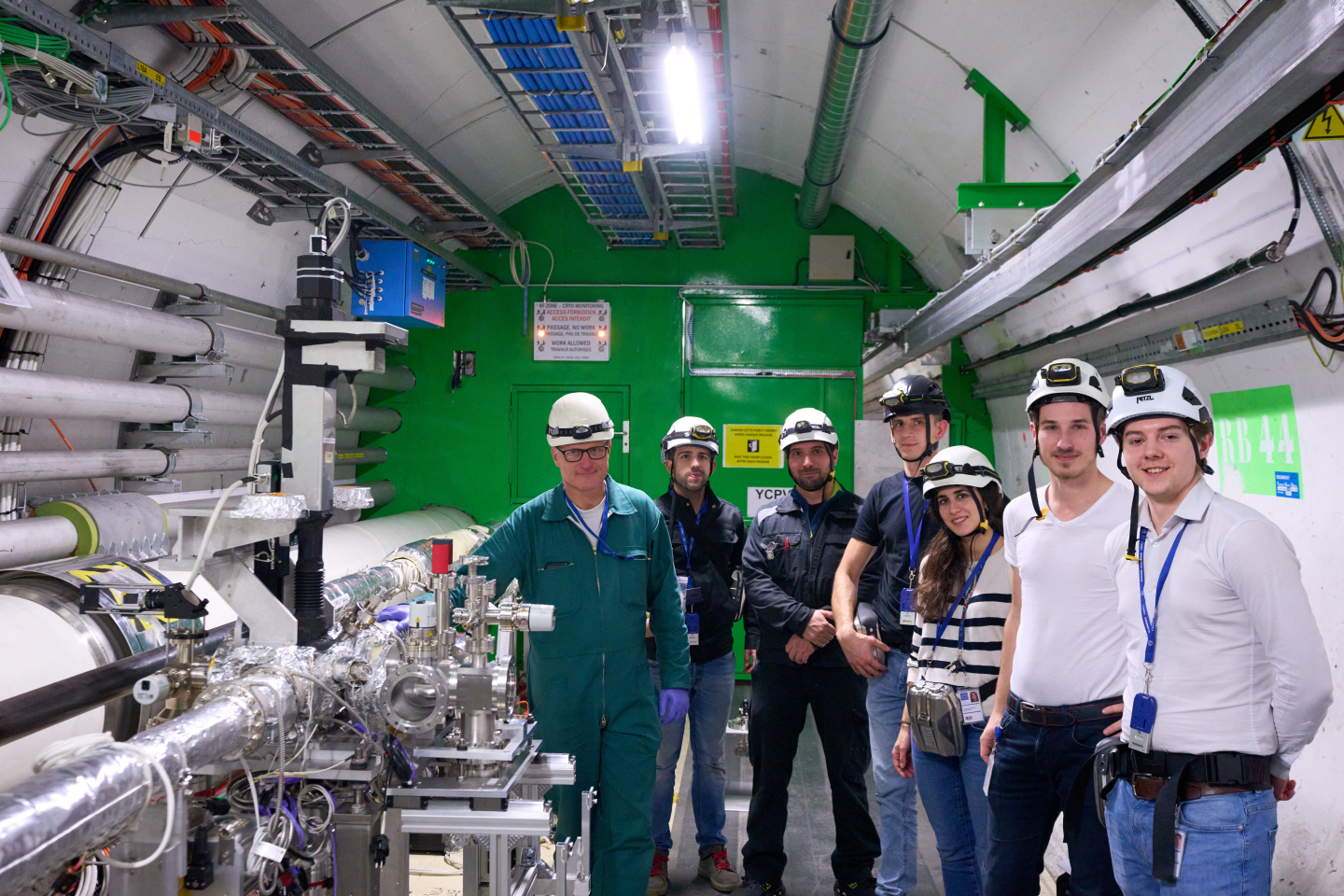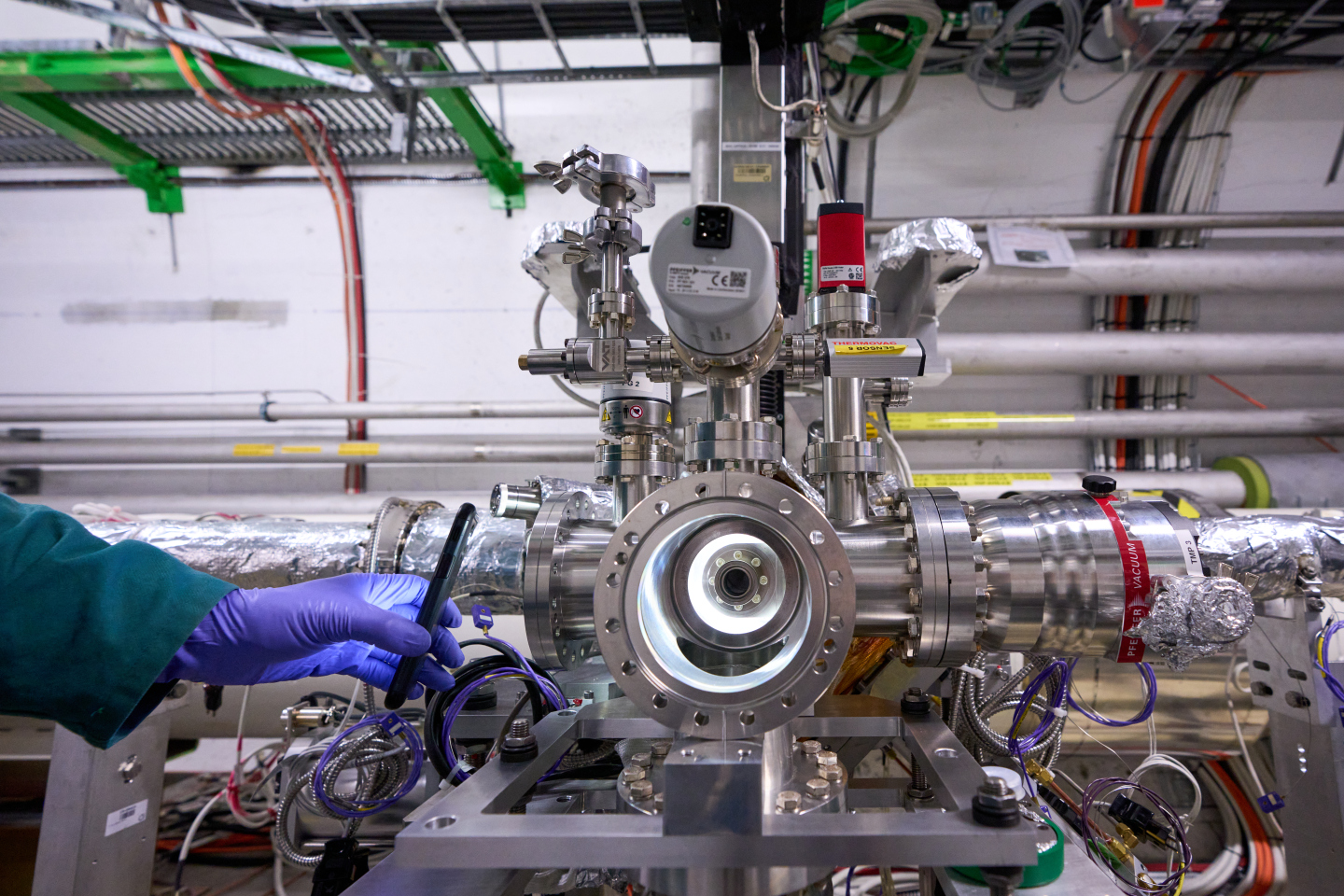The University of Liverpool’s ongoing collaboration with the European Organization for Nuclear Research CERN and GSI Helmholtzzentrum für Schwerionenforschung reached new heights as the Beam Gas Curtain (BGC) device was installed on the Large Hadron Collider during the year-end technical stop. The Beam Gas Curtain device is a non-invasive beam profile monitor that uses a supersonic gas jet and the phenomenon of beam-induced fluorescence to capture a 2D profile image of a particle beam.
Experts from Liverpool’s QUASAR Group have been leading the research and development of this exciting new technology for the past 13 years with several prototypes and three graduated PhD students.
This advanced monitor was developed as part of Liverpool’s contribution to the High-Luminosity upgrade of the Large Hadron Collider (HL-LHC) collaboration. The HL-LHC project, a large international collaboration, will upgrade the LHC by increasing the number of particle collisions by a factor of 10, allowing physicists to learn more about the properties of the Higgs boson and supporting new discoveries.
Due to the destructive power of the beam in the upgraded accelerator, it would have been very challenging to measure the detailed beam profile using more conventional interceptive methods. The supersonic gas jet curtain overcomes this limitation by using either nitrogen or neon gas to monitor the main beam. The beam passes through the gas curtain screen and excites the molecules in the gas. This leads to the emission of light which can be recorded by a bespoke imaging system. Due to the high directionality of the supersonic jet and a large number of highly efficient vacuum pumps, the vacuum in the main storage ring will be minimally perturbed.
Before delivering the gas jet-based beam monitor to CERN it was successfully tested in a dedicated setup at the Cockcroft Institute’s DITAlab. Using a continuous electron beam with 5 keV energy and 0.6 mA current, the Group probed the detailed properties of the electron beam. The results showed a very good agreement with other methods whilst an excellent vacuum quality was maintained. Other experiments were done to test different geometries of the gas jet curtain and explore the possibility of replacing the turbo-molecular pump with Non-Evaporable Getter (NEG) pumps to further reduce the size and complexity of the monitor. Once these tests were completed, the monitor was ready to go to CERN. It was successfully received at CERN’s Precession site in France on Thursday, 17 March 2022.
Over the last months, the monitor has been commissioned at CERN and used to measure the beam properties at a dedicated Electron Beam Test Stand (EBTS).

Ray Veness, project leader at CERN, commented: “We can only make these complex installations in the LHC at year-end technical stops, so we were very happy to receive this complex instrument on-schedule and working beautifully. The Liverpool team worked together closely with CERN to produce and install an instrument that is able to work safely in the highly-constrained environment of the LHC beam vacuum system.“
The new monitor will be important to give a precise measurement of the detailed beam properties. This will help ensure safe operation of the accelerator, furthers our understanding of the beam dynamics, and ultimately allows to optimize the physics output.

Carsten P Welsch, who leads the project at Liverpool, said: “This installation marks a great achievement, attesting to the word “collaboration” where tens of thousands of hours of work between colleagues at Liverpool, CERN and GSI has brought the project to this point. We are all very excited for real world-first results once the LHC restarts.”
Further information:
‘Characterization of a supersonic molecular beam for charged particle beam profile monitor’, H.D. Zhang, A.Salehilashkajani, O. Sedlacek, C.P.Welsch, Vacuum, Volume 208, February 2023, 111701 https://doi.org/10.1016/j.vacuum.2022.111701
‘A gas curtain beam profile monitor using beam induced fluorescence for high intensity charged particle beams’, A. Salehilashkajani, H.D. Zhang, et al., Appl. Phys. Lett. 120, 174101 (2022); https://doi.org/10.1063/5.0085491

